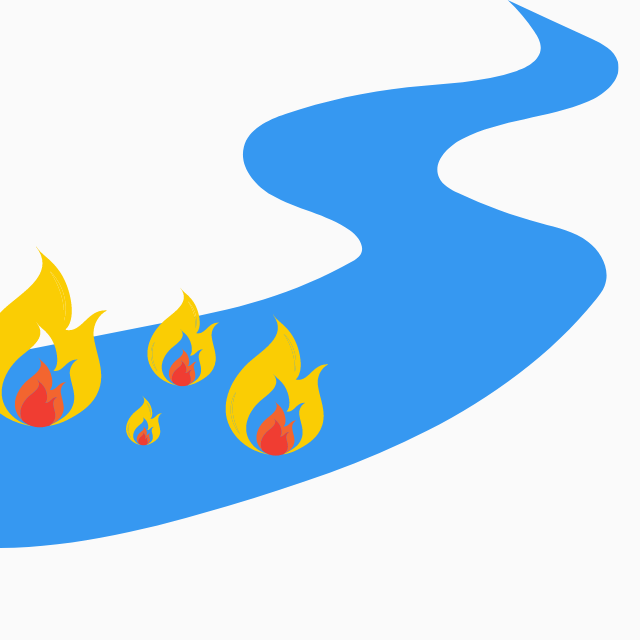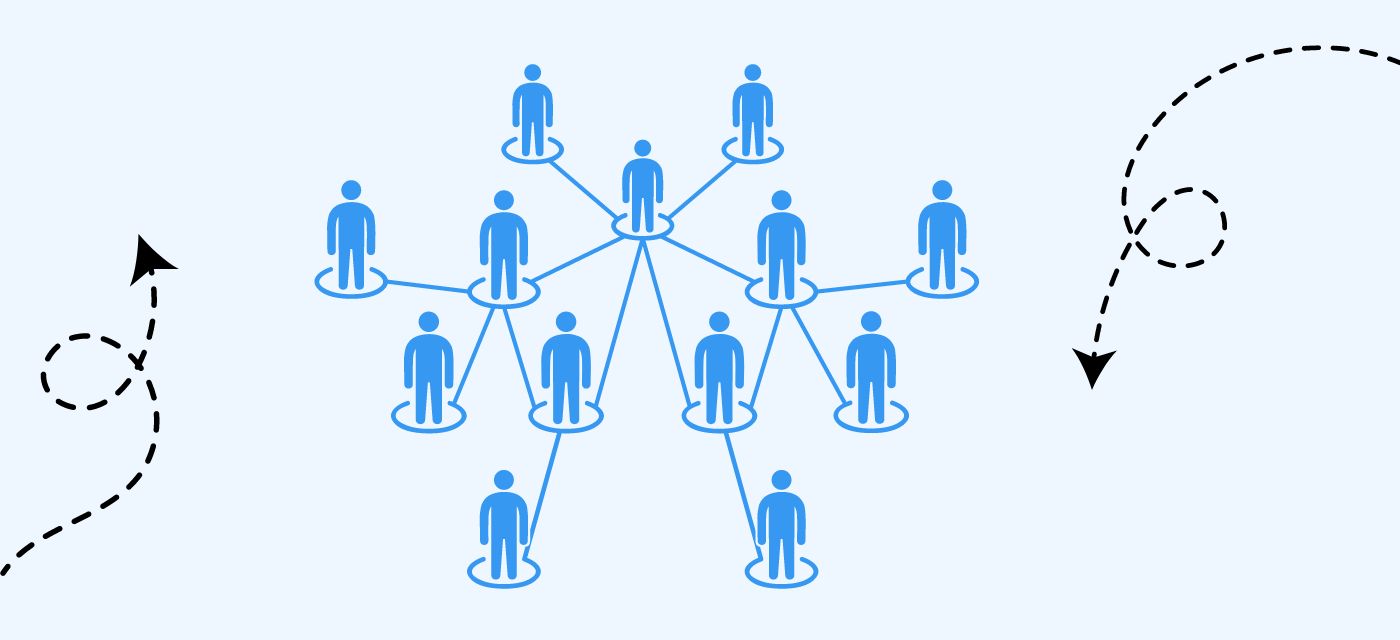A talent market like we’ve never seen before
The global talent market has never changed this much, this quickly. Call it The Great Resignation, The Great Reshuffle, Attrition, Attraction, The Big Reset or The Great Vacation - the underlying theme is the same. Everyone is rethinking everything. In our roles, this is looming as another massive risk on the back of 18 months of urgent, overwhelming change in the People function.
Luckily, opening up from COVID later than our US friends has given us the benefit of previewing what’s to come and, with that, an opportunity to learn from their experiences. There are clear trends and insights emerging about the causes and impacts that we can leverage to help inform the preventative measures and preparation we can take to soften the blow to our own Australian organisations.
Here are practical measures your organisation can take to minimise the risk, how to tackle it, and insights from a roundtable discussion with some of Australia’s leading organisations.
What is the Great Resignation… really?
The number of resignations in the US are frightening:4m people have been resigning each month since April. The research shows there is no single driver to this movement. Salaries have risen astronomically for developers, people have made sea changes and tree changes and are demanding remote options which many companies won’t offer beyond lockdown. Managers are burned out, fatigued from long hours and stressful work, and many women in particular are opting out as homeschooling was the straw that broke the unsustainable/underpaid worker’s back.
There does, however, seem to be two things that tie these groups together:
- they’re all trends which have been lurking for a while but are coming to a head now, and
- they all point to the need to ‘humanise’ work experiences.
As McKinsey stated in a Sept article: “employees crave investment in the human aspects of work. …By not understanding what their employees are running from, and what they might gravitate to, company leaders are putting their very businesses at risk. Moreover, because many employers are handling the situation similarly—failing to invest in a more fulfilling employee experience and failing to meet new demands for autonomy and flexibility at work—some employees are deliberately choosing to withdraw entirely from traditional forms of full-time employment.” (1)
What are the early warning signs & who’s seeing them
The following have been identified as early warning signs to indicate one of your employees may be at risk of leaving:
- Burnout
- Increased requests for remote working arrangements
- Increased requests for reduced hours
- Attrition increase
- Not taking annual leave.
People are working harder, more people are burning out and leaving, and it’s creating more capacity gaps, more work for TA and higher costs to the business.
So, what can break the cycle? We need to pause, collect data, then strategise to get the most out of our people and the most for our people. We’re going to find it really hard to stem attrition and plan for growth without taking a step back and resetting.
How bad will it be in Australia?
40% of Australian workers - 41% of them white collar workers - are looking to resign in the next 6 months. Three different surveys have reached this same conclusion for the Australian market - from McKinsey, Employment Hero (BI Australia), and LinkedIn. The prediction is we’ll see the full impact of The Great Resignation in March 2022. Additionally, a recent Adecco survey across 25 countries found Australian office workers are the most burnt out in the world. (2)
The implications of this massive shift will inevitably impact all of us, but the ones who act now to put in preventative measures can reduce that impact significantly.
Be the organisation talent leave their jobs for
Where people are resigning, there is opportunity for the best companies to capture that talent. We’re seeing bold statements from Atlassian and Canva who continue to be overwhelmed by applications since introducing their ‘work from anywhere’ policies in the tightest talent market we’ve seen in years.
Yes, these are Aussie Unicorns and many organisations aren’t, but that doesn’t mean you can’t give people what they need. In our six years of working closely with organisations across many industries and sizes, we’ve found most experiencing high people risk fall into one of the following categories:
- they don’t understand what their people really want,
- they don’t understand why they want it,
- they don’t listen, and/or
- they don’t agree.
If your organisation can be one of the few to get it right internally, you’ll be able to take a genuine offering to market to attract the best talent who are resigning from other organisations. You’ll also be able to harness the data you have on what your people love about your business, package it up with your brand and use that as a proactive approach to attract talent while other organisations are sitting ducks, fearful of what’s to come.
Your step-by-step guide to minimising the impact of the Great Resignation
It’s practical, it’s achievable and you’ll be joining leading businesses like Google, McDonalds, Campari, Fitness Passport, General Mills and more who are already taking action.
Step 1: Get a snapshot of where you stand, by identifying the risks within your organisation
Have you assessed the risk to your own organisation? If not, it’s important to collect the data. This isn’t a one-size-fits-all situation. Based on learnings from the US, here are four things to consider measuring when making your assessment:
How much of your employee population is at risk?
It’s important to understand the risk areas so we can identify employees which are most at risk. (3)
- Resignation rates are highest among mid-career employees or employees between the ages of 30 and 45. Many of these workers may have simply reached a breaking point after months of increased workloads, hiring freezes, and other pressures, causing them to rethink their work and life goals. (4)
- Resignations are highest in the tech and healthcare industries.
What could drive your employees to leave?
These were the main drivers of employees leaving in the US: (5)
- 28% left without a new job to go to - they were simply too burned out.
- 40% who had a new job chose it because of the ability to work remotely
- 24% left because the new job offered flexibility in working hours
- 22% felt more comfortable disclosing a mental health condition with their new employer - speaking to inclusive cultures and strong Manager empathy
Which employees are at risk of burning out?
We can measure this with data showing us how many people:
- Are consistently working 50+ hours (the point at which employees are at risk of burnout)
- Have a work mix which is de-energising, highly reactive or overwhelmed by meetings
Are happiness and satisfaction levels declining?
- Pulse and engagement surveys are important to get a snapshot of this measurement.
Step 2: Pause, reset & prepare
Our clients at Beamible are taking on these key steps to reset and take stock of their business to lighten the impact of the Great Resignation and other People risks. They can be applied to most organisations.
Resourcing vs prioritisation evaluation
- Determine whether prioritisation or resourcing is the answer to your capacity gaps, then use data and insights to inform your strategy.
- An example of this would be Engineering managers prioritising code reviews when this can be done by other people. Re-prioritising is the solution to this capacity gap, not resourcing.
Finding capacity in your organisation & optimising your workforce
- Give people the tools for ruthless prioritisation and identification of non-essential, duplicate or inefficient work.
- Do people know how much of their work aligns with your organisation’s key strategic imperatives?
- Have you given them the licence to say no? To pause or share work?
- A great example is General Mills who have set the tone from the top that it’s okay to push back on on-the-fly requests that may not be aligned to business goals.
- For executives, they’ve been encouraged from the top to assess whether meetings are a priority and say ‘no’ if they aren’t to focus on the activities that are high value.
Alternative resourcing strategies
- Get creative with resourcing if you can’t find the talent you’re searching for.
- A good examples is this Fitness Passport case study
Giving your people and managers the tools to work through these solutions can not only reduce burnout while still delivering on business outcomes - but is a bold show of trust in their ability to find solutions. This is the autonomy people are craving.
Step 3: Put in preventative measures to stem attrition
Be bold with one or all of these approaches to prevent and stem attrition.
Provide genuine flexibility to address burnout
Flexibility is now the fastest-rising job priority in the US, according to a LinkedIn poll. But we need to think beyond Hybrid working and look to asynchronous hours to acknowledge:
- different time zone work
- part-time work models
- job-share work models
- convenience work like part-time hours while traveling in Europe
- sabbaticals to take up a hobby or new work venture
- retaining would-be retirees with a phase-out plan.
The Wall St journal calls out “Real flexibility is having autonomy to choose your people, your purpose and your priorities.” (6) Our most precious commodities are our time and health. Can you offer your people the option to trade money for time?
Take a bottom up (not top down) approach
Or you can do both if you must. Invite people to experiment in their own job before they resort to resigning. Give them an avenue to propose a solution, to customise their own work.
The Wall St Journal cited Morning Star, whose employees after one year are invited to rewrite their job descriptions, with two conditions:
- you have to explain how your revamped job will advance the company’s mission
- you have to get the people who work with you most closely to agree to it.
We’d recommend a role redesign approach through Beamible… but you’ll get the same outcome! “When employees have the flexibility to customize their work, they’re more effective, more satisfied and more likely to stay.” (7) Organizational psychologists Amy Wrzesniewski and Jane Dutton call this “job crafting,” and it enables people to become active architects of their own tasks and interactions.
If there’s one thing we’ve learned in COVID, talent want to be trusted and treated as the adults that they are. A top-down approach which dictates changes to people’s jobs—the way they work, where or how long—may be met with a revolt. As McKinsey said, “A heavy-handed back-to-the-office policy or other mandates delivered from up high—no matter how well intentioned—are likely to backfire.” (McKinsey)
Leverage hyper-personalisation
It’s a talent trend here to stay. Just as Employee Experience followed Customer Experience, and People Analytics followed Marketing Analytics, Talent Hyperpersonalisation follows the incredible innovations in customer Hyper Personalisation which our marketing teams have crafted with their digital strategies.
Our people are individuals. How they value their time, what work energises them, when they want to work, how they want to interact, and how their work improves their lives are all unique.
Can your organisation provide a way to customise roles and work experiences in a scalable way? It isn’t as hard or disruptive as it sounds.
Leader capability
This seemed to resonate with many organisations who attended our recent roundtable on the subject (register in the footer of our website to be notified of the next roundtable event!). They recognised the attrition risk to our businesses is too big to gamble on the manager lottery.
We need to ensure our people leaders are equipped, not only to manage flexible teams, but to:
- invite changes to how work is done,
- adapt to people and business changes fluidly, and
- start from a place of trust.
This doesn’t mean they don’t have business controls - in fact using data to inform these decisions is even more important in an adaptive work environment to ensure the business imperatives are resourced.
McKinsey advised in an October article that training and capability building will be crucial for managers and executives to make their people feel valued, to motivate and inspire their teams and lead with compassion (McKinsey). We would take this a step further - encouraging tooling for Managers to make it easier, and people data to ensure employee experiences are more consistent across the organisation rather than depending on the manager.
Lead from the front
Start experimenting and working towards sustainable work models.
We have been asked by several CEOs in the last few months to redesign their roles to be more sustainable. We’re tremendously encouraged by this - role modeling sustainable work not only gives licence to others to make their own work sustainable and makes leadership roles aspirational again, but it says louder than any words: I value my personal life and I value yours. We invite you to take the same challenge. We’ll help you. It can be done.
This becomes particularly important to get the cut-through on ruthless prioritisation across the organisation. If the belief from the top is that everything needs to be done and nothing can wait, it’s extremely difficult for management to support employees in managing workload. If it isn’t clearly articulated from the top what can stop and what’s most important, we’re also leaving this critical decision on what to prioritise up to individuals and it’s easy to lose control.
Why this is a critical step
Give people the power and tools to design the flex they want, which meets their individual needs as well as business goals, and give leaders the tools to support them while doing the same for themselves. This will set you apart and quiet the discontent which may be rumbling for 40% of your people… and give you genuine stories to take to market for new talent.
Step 4: Quick wins
While everything we’ve mentioned up until now may feel far away, or like even more work for YOU… it doesn’t need to be overwhelming. Here are 3 ideas to start small which we could enable you to do as early as tomorrow.
Ruthless prioritisation
Pilot ruthless prioritisation with one division… HR and Marketing are always burned out and good places to start! What is mission critical to the business? What can be paused or eliminated altogether? What work can be reallocated to someone who’s more efficient or effective with various activities? These are the questions you can put to the team to start ruthlessly prioritising.
One of the approaches suggested in our recent leadership roundtable focused on implementing or leveraging existing OKRs to help shape the ruthless prioritisation process by helping to understand what is the most important work and where to say no. It also gives permission to leadership to push back on projects, tasks and activities that don’t align with those OKRs.
‘Win time back’ challenge
Put a ‘Win time back’ challenge to a group of leaders with 1 hour role design 1-1s. See what can be removed or shifted to take time back by simply making time for an hour of reflective planning.
Give people options
Put a stake in the ground, a process in place and announce that people can tweak their current job or responsibilities so it meets their needs. Invite people to propose a better role for the life they want.
These are just three quick wins we know work (and can be supported through Beamible, of course!) There are several other options and things to try which can be facilitated by our team or your own.
The talent have spoken - it’s our turn now
For several generations, we’ve organised our lives around our work. Our jobs have determined where we make our homes, when we see our families and what we can squeeze in during our downtime. It might be time to start planning our work around our lives. (Wall St Journal)
Speak to our team today about Beamible - the platform solution to help combat and prevent burnout in your organisation.
Or go ahead and dive in with a FREE 14 day trial (no credit card required!)
Sources:
(1) McKinsey Sept 21: ‘Great Attrition’ or ‘Great Attraction’? The choice is yours
(3) Harvard Business Review 15 September: Who is driving the Great Resignation?
(4) Harvard Business Review 15 September: Who is driving the Great Resignation?
(5) TechRepublic 1 October: 3 signs the Great Resignation is still going strong
(6) The Wall Street Journal 8 Oct: The Real Meaning of Freedom at Work
(7) The Wall Street Journal 8 Oct: The Real Meaning of Freedom at Work





